Introduction to Business Automation
Businesses nowadays are looking to business automation as a source of innovation since efficiency and speed are critical. Fundamentally, business automation is the use of technology to carry out repetitive tasks in an organisation when human labour may be substituted. A range of technologies and software intended to automate business operations are used to accomplish this. Simple procedures like data input and complicated ones like customer relationship management and decision-making processes may both be automated.
Automation’s Development and Significance for Business
Business automation’s history is one of development. What began as simple job automation has developed into sophisticated systems that can manage intricate corporate operations. The desire for organisations to become more efficient, save expenses, and maintain their competitiveness in an increasingly digital environment is what is driving this transformation. In order to scale operations, increase accuracy, and improve customer experiences, automation has become essential.

How Automation Is Transforming Industries
There are several advantages to automation. It cuts down on the amount of time spent on monotonous work, eliminates the possibility of human mistake, and frees up staff members to concentrate on higher-value jobs.Because tedious duties are taken out of the daily workload, this increases productivity while also improving job happiness. Automation also improves turnaround times and results consistency, which boosts overall corporate efficiency.
Challenges and Considerations in Implementing Automation
Although there are many benefits, there are drawbacks to automating processes. Success depends on selecting the appropriate tools that support organisational objectives, guaranteeing seamless interaction with current systems, and preparing personnel to use new technology. To make sure that the subtleties of certain company activities are preserved, automation and human monitoring must be balanced.
Why Every Business Should Consider Automation

Enhancing Operational Efficiency and Productivity
When it comes to increasing operational efficiency, automation is revolutionary. Businesses may do more in less time and free up staff to concentrate on key projects by automating regular operations. The demand for automation across all industries is largely being propelled by this improvement in productivity.
Cost Reduction, Accuracy, and Error Minimization
Cost reductions are among the advantages of automation that are felt right away. Reduced mistakes and time spent fixing them are two benefits of automated procedures, which also result in a large drop in operating expenses. Furthermore, jobs ranging from data input to sophisticated analytics are performed with a greater degree of accuracy thanks to the accuracy of automated systems.
Competitive Advantage in the Digital Age
Remaining ahead of technology changes is crucial for maintaining competitiveness in the current digital environment. In addition to streamlining processes, automation offers data and insights that help with decision-making for the firm. Businesses that use automation are frequently more flexible and better able to adapt to changes in the market.
Impact on Employee Satisfaction and Talent Retention
The workforce is positively impacted by automation. Employees are more engaged and able to make more innovative contributions to the company when monotonous and repetitive duties are eliminated. Better performance, increased work satisfaction, and enhanced talent retention follow from this.
Scalability and Adaptability in Dynamic Markets
Automation offers companies seeking to grow the flexibility and agility they want in a constantly changing market. Businesses may quickly adapt to changing market demands by scalably adjusting automated systems, which eliminates the need for substantial staff or resource increases.
Top 10 Business Automation Tools
1. Quickboarding
QuickBoarding is a digital no-code platform designed to streamline and enhance the business experience. It automates and simplifies all internal processes of an organization, from handling essential paperwork to introducing company policies and culture & to onboard new employees. The platform provides a user-friendly interface for both employers and employees, ensuring a smooth and efficient processes journey.
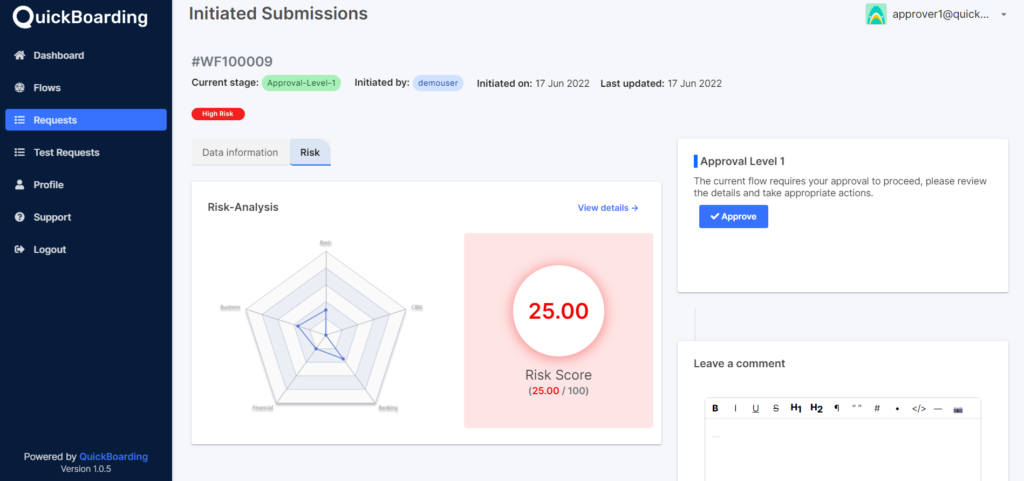
Detailed Features :
- Automated Workflow: Quickboarding automates the entire business process, from document / contract management to task assignments.
- Customizable Templates: Offers customizable business process templates to suit different job roles and departments.
- Integration Capabilities: Seamlessly integrates with existing CRM, HR, Communication systems for a unified approach.
- Compliance Management: Ensures compliance with legal and organizational policies during the complete process.
- Real-Time Tracking: Provides real-time tracking of the application / responses progress for everyone with customized permission management.
| Pros | Cons |
| Automates repetitive onboarding tasks | – |
| Integrated AI engine | – |
| Reduces paperwork and manual errors | – |
| Customizable to various business needs | – |
| Ensures legal and policy compliance | – |
| Easy Integrations to digital systems | – |
| Available in both cloud and on-premises formats | – |
2. Signavio Process Manager
Businesses can map, analyse, and optimise their business processes visually using Signavio Process Manager, a cloud-based business process management tool. It provides an easy-to-use drag-and-drop interface for developing and altering process diagrams and models processes using BPMN 2.0. By enabling several users to collaborate on process models at once, this tool improves productivity and decision-making in process optimisation.
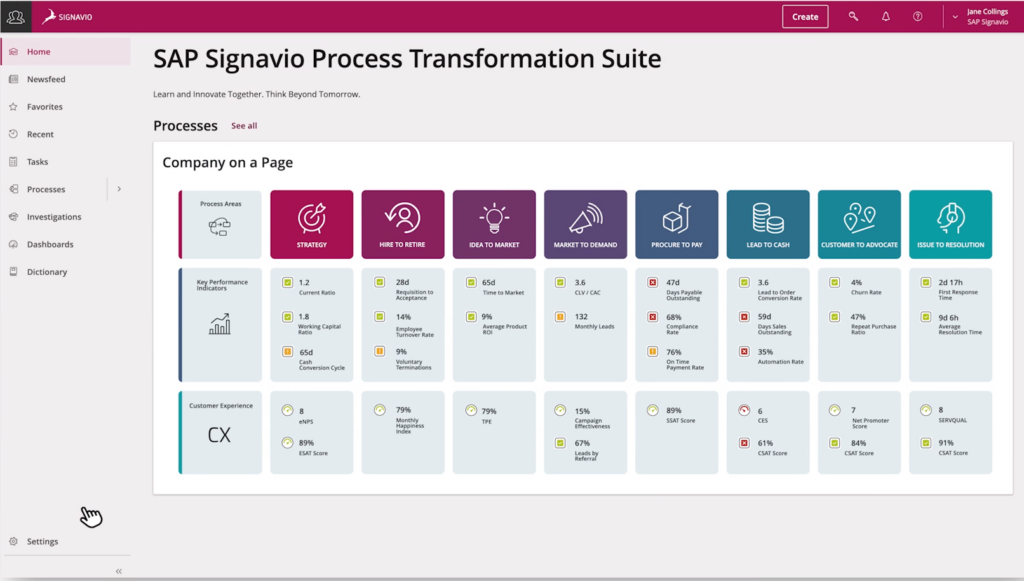
Detailed Features:
- Collaborative Process Design: Enables multiple users to collaborate on process design in real time.
- Intuitive Interface: User-friendly interface that simplifies complex process modeling.
- Process Simulation: Allows simulation of business processes for analysis and improvement.
- Performance Analytics: Provides analytics to measure the effectiveness of processes.
- Cloud-Based Solution: Offers flexibility and accessibility through its cloud-based nature.
| Pros | Cons |
| Intuitive design for easy collaboration | Can be overwhelming for smaller organizations |
| Advanced process modeling capabilities | Higher cost structure for full features |
| Real-time process simulation and analytics | Requires training for optimal use |
| Supports continuous process improvement | Integration with certain legacy systems can be challenging |
| Cloud-based for enhanced accessibility | Dependence on a stable internet connection |
3. Bizagi
Bizagi is a digital business process management (BPM) tool that enables organizations to design, automate, and optimize their business processes. It offers a user-friendly platform for creating workflow models and supports the integration of these processes with existing IT infrastructure.
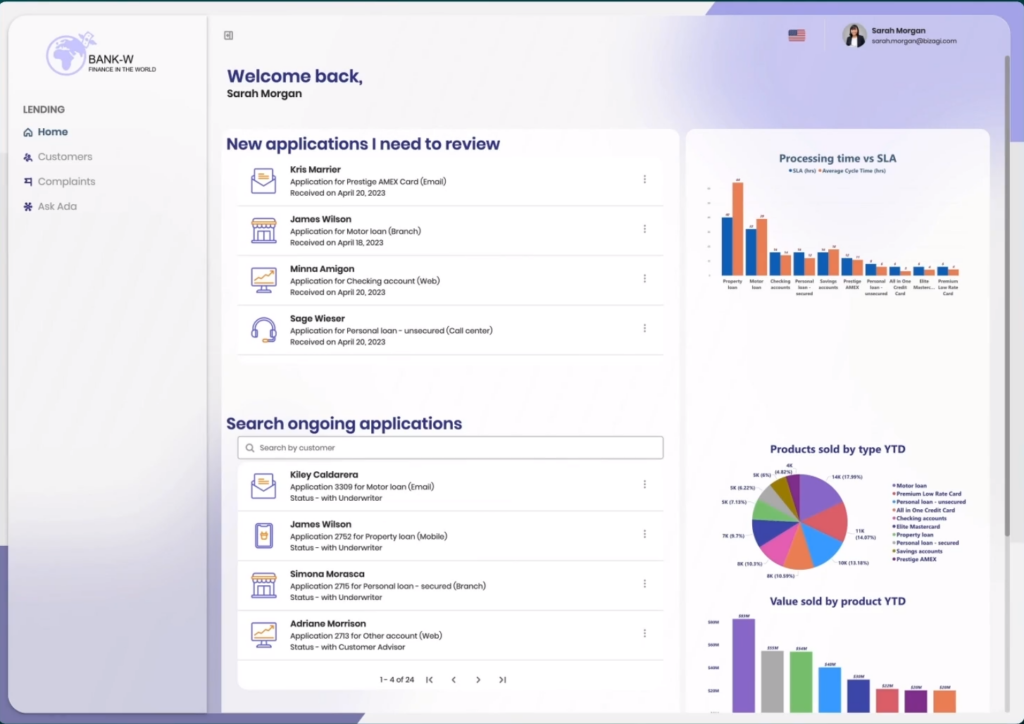
Detailed Features:
- Drag-and-Drop Interface: Simplifies process automation with a user-friendly drag-and-drop interface.
- Digital Transformation Focus: Tailored for businesses undergoing digital transformation.
- Dynamic Case Management: Offers flexible case management to handle varying scenarios.
- Extensive Integration: Integrates with a wide range of enterprise systems and databases.
- Cloud and On-Premises Options: Available both as a cloud service and an on-premises installation.
| Pros | Cons |
| User-friendly interface for non-technical users | Resource-intensive for large-scale implementations |
| Ideal for digital transformation projects | Learning curve for leveraging advanced features |
| Adaptable case management for various scenarios | Integration complexity with diverse systems |
| Broad integration capabilities | Potential high costs for full feature access |
| Available in both cloud and on-premises formats | Requires ongoing maintenance and updates |
4. Pega BPM
Pega BPM is a powerful business process management software that provides a comprehensive suite for automating, optimizing, and streamlining business processes.It is known for its ability to rapidly adapt to changes in business requirements, facilitating the creation of efficient, scalable, and tailored workflows for a wide range of industries.
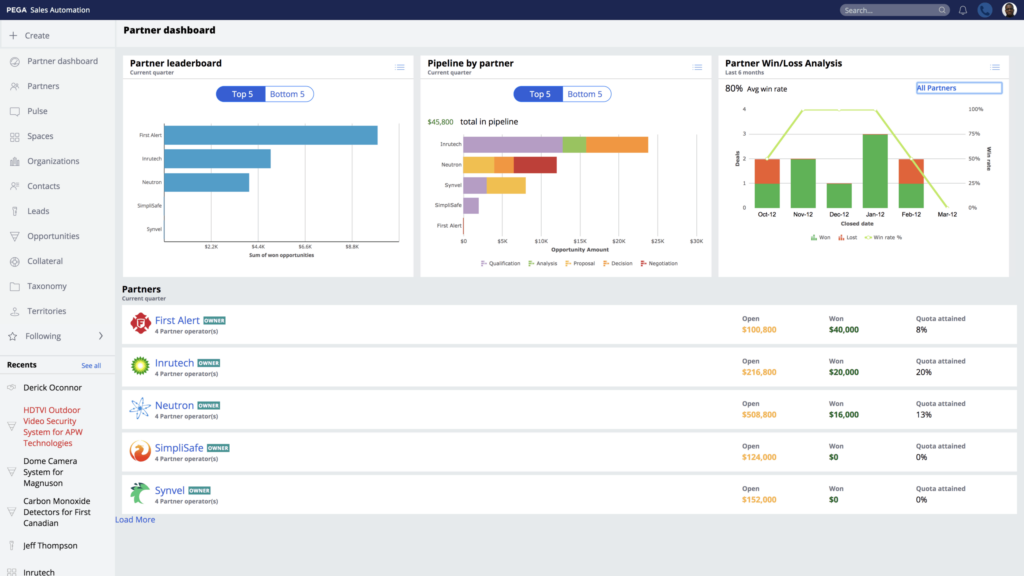
Detailed Features:
- AI-Powered Decisioning: Utilizes AI for advanced decision-making processes.
- Dynamic Case Management: Adapts to complex, variable business processes.
- Robotic Process Automation: Automates routine tasks with robotic technology.
- Customer Engagement Engine: Enhances customer relationship management with personalized interactions.
- Scalable Architecture: Designed to scale with the growing needs of businesses.
| Pros | Cons |
| Advanced AI and machine learning integration | High cost compared to some competitors |
| Strong focus on customer engagement and CRM | Complexity may require skilled IT professionals |
| Dynamic case management for varied processes | Longer implementation time for full integration |
| Robotic process automation for routine tasks | Can be overwhelming for small to medium-sized businesses |
| Scalable to business growth and changes | Potential additional costs for customization |
5. Appian
Appian is a low-code automation platform that empowers businesses to create apps and workflows rapidly. It integrates business process management, AI, and data management to streamline operations and improve decision-making. Appian is known for its intuitive design interface and powerful analytical tools, enabling organizations to develop, deploy, and manage complex processes with minimal coding, thereby accelerating digital transformation.
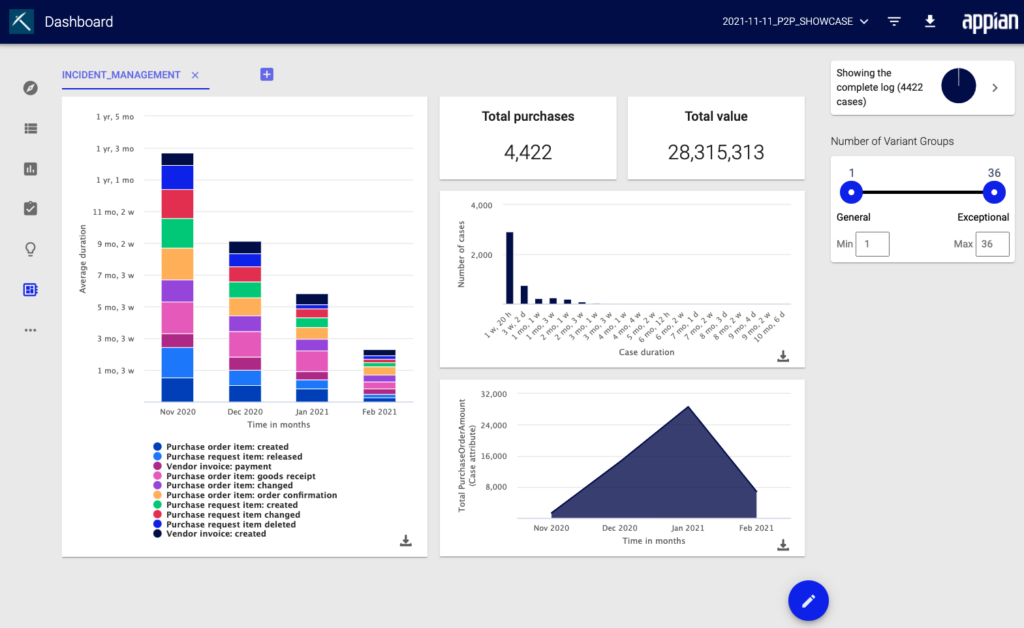
Detailed Features:
- Low-Code Development: Simplifies the creation of applications with minimal coding.
- Process Automation: Streamlines complex business processes efficiently.
- System Integration: Easily integrates with existing databases and software.
- Mobility: Offers mobile app development for on-the-go access.
- Data Management: Robust data management capabilities for handling large datasets.
| Pros | Cons |
| Simplifies app development with low-code approach | Can be expensive for small businesses |
| Efficiently automates complex business processes | Requires training for optimal use |
| Seamless integration with existing systems | May need customization for specific needs |
| Enables mobile access to business applications | Potential dependency on Appian for updates |
| Handles large volumes of data effectively | Limited third-party community support |
6. Nintex
Nintex is a workflow automation software that helps organizations automate and optimize their business processes. It offers a user-friendly, drag-and-drop interface for creating custom workflows and forms, making it accessible to non-technical users. Nintex supports a wide range of process automation tasks, from simple to complex, and integrates seamlessly with various platforms like SharePoint, Office 365, and more, enhancing productivity and operational efficiency.
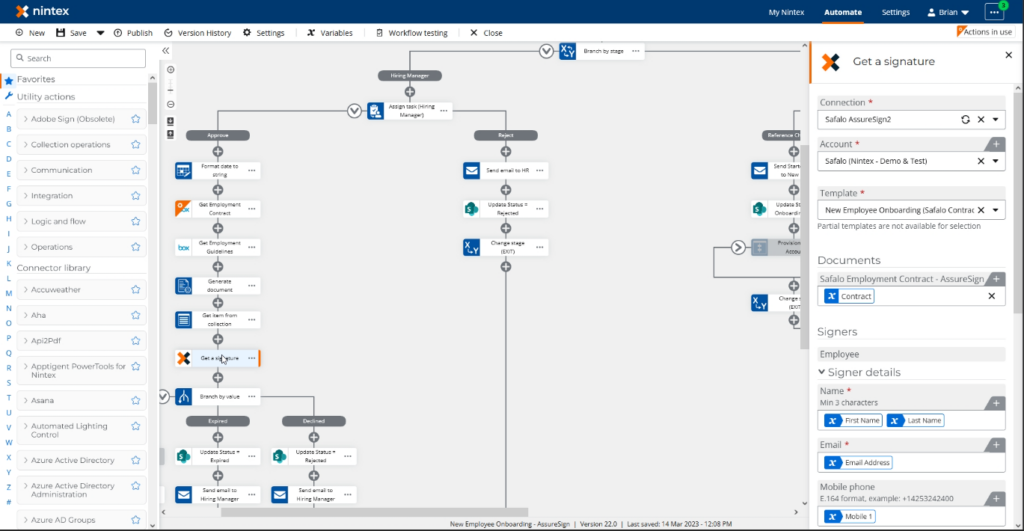
Detailed Features:
- Workflow Automation: Automates business processes and workflows.
- Drag-and-Drop Interface: User-friendly interface for easy workflow creation.
- Mobile Workflow Management: Allows management of workflows on mobile devices.
- Document Generation: Automates document creation and management.
- Process Mapping: Visualizes processes for better understanding and improvement.
| Pros | Cons |
| Adaptable to a wide range of business needs | Learning curve for non-technical users |
| User-friendly drag-and-drop workflow design | May require integration with other business systems |
| Mobile management for workflows | Limited functionality in the basic plan |
| Automated document generation and management | Costs can escalate with additional features |
| Effective process mapping for optimization | Dependence on regular software updates |
7. IBM Blueworks Live
IBM Blueworks Live is a cloud-based business process modeling and documentation tool. It enables organizations to visually map out their business processes, document procedures, and collaborate on process improvement initiatives. With its intuitive interface and a library of pre-built templates, Blueworks Live simplifies the process of creating, analyzing, and optimizing workflows.
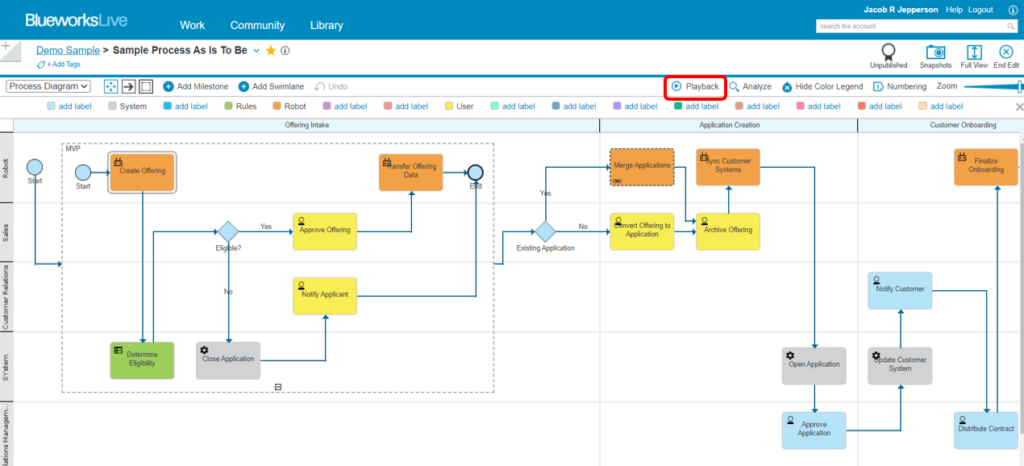
Detailed Features:
- Cloud-Based Collaboration: Facilitates real-time collaboration in process design.
- Process Discovery: Aids in discovering and documenting processes.
- Built-In Templates: Provides templates for a quick start in process modeling.
- Integration with IBM Products: Seamless integration with IBM’s suite of tools.
- Analytics and Reporting: Offers insightful analytics and reporting capabilities.
| Pros | Cons |
| Real-time collaboration in cloud-based environment | Can be less intuitive for first-time users |
| Effective for process discovery and documentation | Relatively limited customization options |
| Offers a variety of built-in templates | Integration primarily focused on IBM products |
| Integrates seamlessly with other IBM tools | Subscription costs can be high for small businesses |
| Provides insightful analytics and reporting | Requires stable internet for cloud access |
8. Bonita BPM
Bonita BPM is an open-source business process management and workflow automation platform designed to streamline and improve organizational processes. It provides a user-friendly environment for creating, executing, and optimizing business processes. Bonita BPM is highly customizable and allows organizations to model complex workflows, integrate with external systems, and automate tasks.
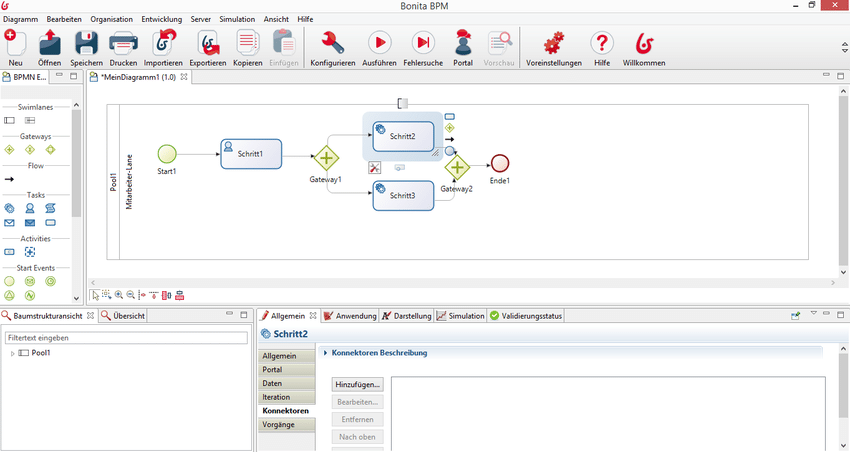
Detailed Features:
- Open-Source Platform: Provides flexibility and customization.
- Process Modeling and Execution: Supports end-to-end process design and execution.
- User Interface Design: Allows designing of custom user interfaces.
- Connectors and Extensions: Extensive connectors for integration with various systems.
- Performance Monitoring: Monitors and reports on process performance.
| Pros | Cons |
| High level of customization due to open-source nature | Requires technical expertise for customization |
| Comprehensive process modeling and execution | May lack the support of proprietary software |
| Customizable user interface design capabilities | Integration can be complex with certain systems |
| Wide range of connectors for system integration | Ongoing maintenance and updates needed |
| Effective performance monitoring and reporting | Potential security concerns with open-source software |
9. Oracle BPM Suite
Oracle BPM Suite is a comprehensive business process management software solution offered by Oracle Corporation. It provides a robust platform for modeling, automating, monitoring, and optimizing business processes within organizations. The suite includes a wide range of tools and features, such as a visual process designer, business rules engine, and analytics dashboard, making it a powerful choice for process automation and optimization.

Detailed Features:
- Complete BPM Suite: Offers a full range of BPM tools including modeling, execution, and monitoring.
- Business Rules Engine: Enables complex decision-making processes.
- Simulations and Analytics: Provides tools for process simulation and detailed analytics.
- Integration Capabilities: Strong integration with Oracle products and other enterprise systems.
- User Experience Design: Customizable user interfaces for better user engagement.
| Pros | Cons |
| Comprehensive BPM toolset | Complexity can be overwhelming for beginners |
| Advanced business rules for complex processes | Higher cost than other products |
| Detailed simulations and analytics for optimization | Can be resource-intensive for smaller businesses |
| Strong integration with Oracle and other systems | Potential for vendor lock-in with Oracle stack |
| Customizable interfaces for enhanced user experience | Requires ongoing maintenance and updates |
10. ARIS BPM
ARIS BPM (Business Process Management) is a leading software suite by Software AG that specializes in process modeling, analysis, and optimization. ARIS BPM is renowned for its comprehensive approach to business process management, offering features such as process modeling, documentation, analysis, and governance. It enables organizations to create detailed process models using BPMN notation, ensuring transparency and alignment with business objectives.
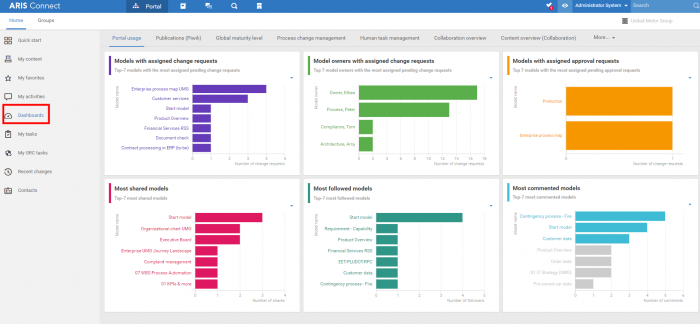
Detailed Features:
- Process Modeling: Offers advanced tools for detailed process modeling.
- Performance Monitoring: Tracks and analyzes process performance.
- Collaboration Tools: Facilitates team collaboration in process design.
- Custom Reporting: Enables creation of customized reports and dashboards.
- Integration Options: Integrates with various enterprise systems for a cohesive workflow.
| Pros | Cons |
| Advanced process modeling tools | Steep learning curve for new users |
| Comprehensive performance monitoring and analysis | Cost can be a barrier for smaller organizations |
| Collaboration features for team involvement | Integration can be challenging with non-standard systems |
| Customizable reporting for tailored insights | Requires skilled personnel for optimal use |
| Wide range of integration capabilities | Ongoing updates and maintenance needed |
Importance of the Right Automation Tool
Any company hoping to boost productivity, save expenses, and maintain its competitiveness in the digital era must choose the correct business automation solution. With distinct features and capabilities to meet various business objectives and procedures, each tool covered in this article is unique. These tools address contemporary company issues by enhancing employee onboarding, simplifying intricate processes, and connecting CRM systems.
With ongoing improvements in AI, machine learning, and low-code platforms, the future of business automation is bright. Companies who use these technologies will discover that they are better able to spur innovation and adjust to shifting consumer demands.
FAQs
- What factors should be considered when choosing a business automation tool?
- Consider your specific business needs, the complexity of your processes, integration capabilities, and budget constraints.
- Can small businesses benefit from business automation tools?
- Yes, many business automation tools are scalable and can be tailored to the needs of small businesses.
- How does automation impact employee satisfaction?
- Automation can enhance job satisfaction by removing repetitive tasks and allowing employees to focus on more strategic and engaging work.
- Is it necessary to have technical expertise to use these tools?
- While some tools require technical knowledge, many offer user-friendly interfaces and low-code options for non-technical users.
- Can automation tools integrate with existing systems?
- Yes, most modern automation tools are designed to integrate seamlessly with a variety of existing business systems and platforms.

